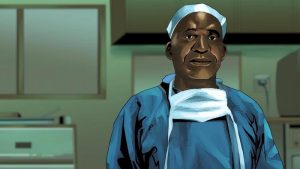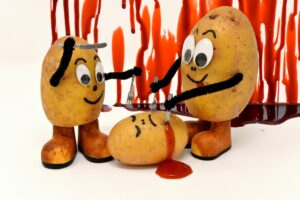Would you believe if you heard that someone who neither had a secondary school education nor spent years in the university to study Medicine and Surgery can actually perform surgery and even teach medical students?
Baffling and bewildering! Not so?
Hamilton Naki was born into a very poor family in the small village of Ngcangane in the Eastern Cape, in 1930. After completing his primary school education, he left for Cape Town in search of a job.
At the age of fourteen, he was hired by the University of Cape Town to maintain the tennis courts on the university grounds.
In 1954, Robert Goetz of the university’s surgical faculty asked Naki to assist him with the laboratory animals. From there, he started from cleaning cages to performing anesthesia.
Can you imagine someone who never stepped into a medical class, let alone attend a medical school, perform anesthesia?
Naki also assisted in operating on a giraffe. The Professor was impressed by his perseverance and sincerity and Naki was promoted from a mowing man to a lab assistant.
In 1958 came another turning point in Naki’s life. This year, Dr Christian Bernard arrived to work at the university and Naki started working for him in the laboratory as an assistant. Because of his remarkable skill and dexterity, he was then made Principal Surgical Assistant of the laboratory. Bernard once said “if Hamilton had had the opportunity to study, he would probably have become a brilliant surgeon”. He also said Naki was one of the greatest researchers of all time in the field of heart transplants.
In 1968, Bernard’s cardiac surgical research team moved out of the surgical laboratory, and Naki helped develop the piggyback or heterotopic heart transplantation technique; a heart transplant technique accomplished by leaving the recipient’s heart in place and connecting the donor heart to the right side of the chest.
In the 1970s, Naki left Bernard’s team and returned to the surgical laboratory, this time, working on liver transplantation.
There were so many testimonies said about him and he in fact, received many awards. He taught many students during his career and assisted Hickman until his retirement. He died in Langa on 29th of May, 2005 (aged 78) of a heart attack.
In this story is a lesson that we should never give up on anything we do. Some people might have desired to study a particular course but unfortunately were not given. That isn’t the end of life. Work hard in that which was given to you and it could pave way for you, because many roads lead to the market.
Written by Bolawole Oreoluwa ,University of Medical Sciences, Ondo State, Nigeria.




Great one.Really inspiring
Wonderful piece
Wow is this real..can’t believe sha
Really?
Wonderful
Really nice story.
There are lots to learn from his life.
We should never give up
Wow! What an awe-inspiring lemma
Nice one
really inspiring, it show that one should never limit him/herself.
We should push forward.
This just shows the vast difference between theoritical and practical knowledge. He didn’t need a school. He learnt the art directly from professionals and this is the way real learning can be done.
This reminds me of the story of first open heart surgery conducted by professor Blalock a Russian surgeon on what they called “blue babies”- cyanotic heart disease who was assisted by his talented assistance called Thomas Vivian. To surprise you Thomas never went to medical school but rather he was assisting Blalock in his laboratory and through his dedication and talent helped professor Blalock in inventing the machine and carrying out the first successful open heart surgery. Anyone interested in this story can watch a drama called “Something the Lord made”
Nice,
There are many roads to the market ooo
I want to thank everyone that commented..I’m really grateful
This is incredible. Perseverance
How motivating. I loved your article!
Awwhhnn.. thanks
Thank you all for the comments 😍